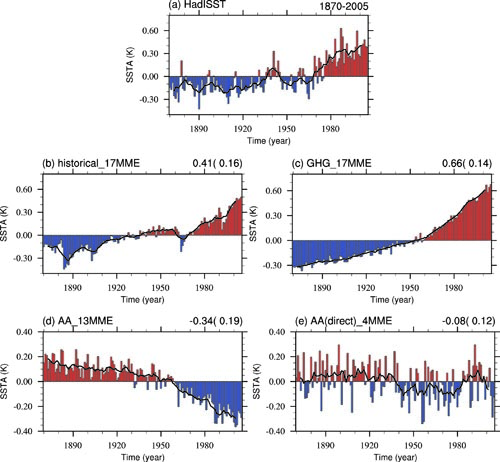[Recently published] The Indian Ocean Sea Surface Temperature Warming Simulated by CMIP5 Models during the Twentieth Century: Competing Forcing Roles of GHGs and Anthropogenic Aerosols
Date:2014-07-30
Main conclusions
Citation: Dong, L., and T. Zhou, 2014: The Indian Ocean Sea Surface Temperature Warming Simulated by CMIP5 Models during the 20th Century: Competing Forcing Roles of GHGs and Anthropogenic Aerosols, Journal of Climate, 27, 3348–3362
Download: http://journals.ametsoc.org/doi/abs/10.1175/JCLI-D-13-00396.1

The anthropogenic aerosol has slowed down the warming rate induced by GHGs, especially through the indirect effect of aerosols.
Summary Slideshow
